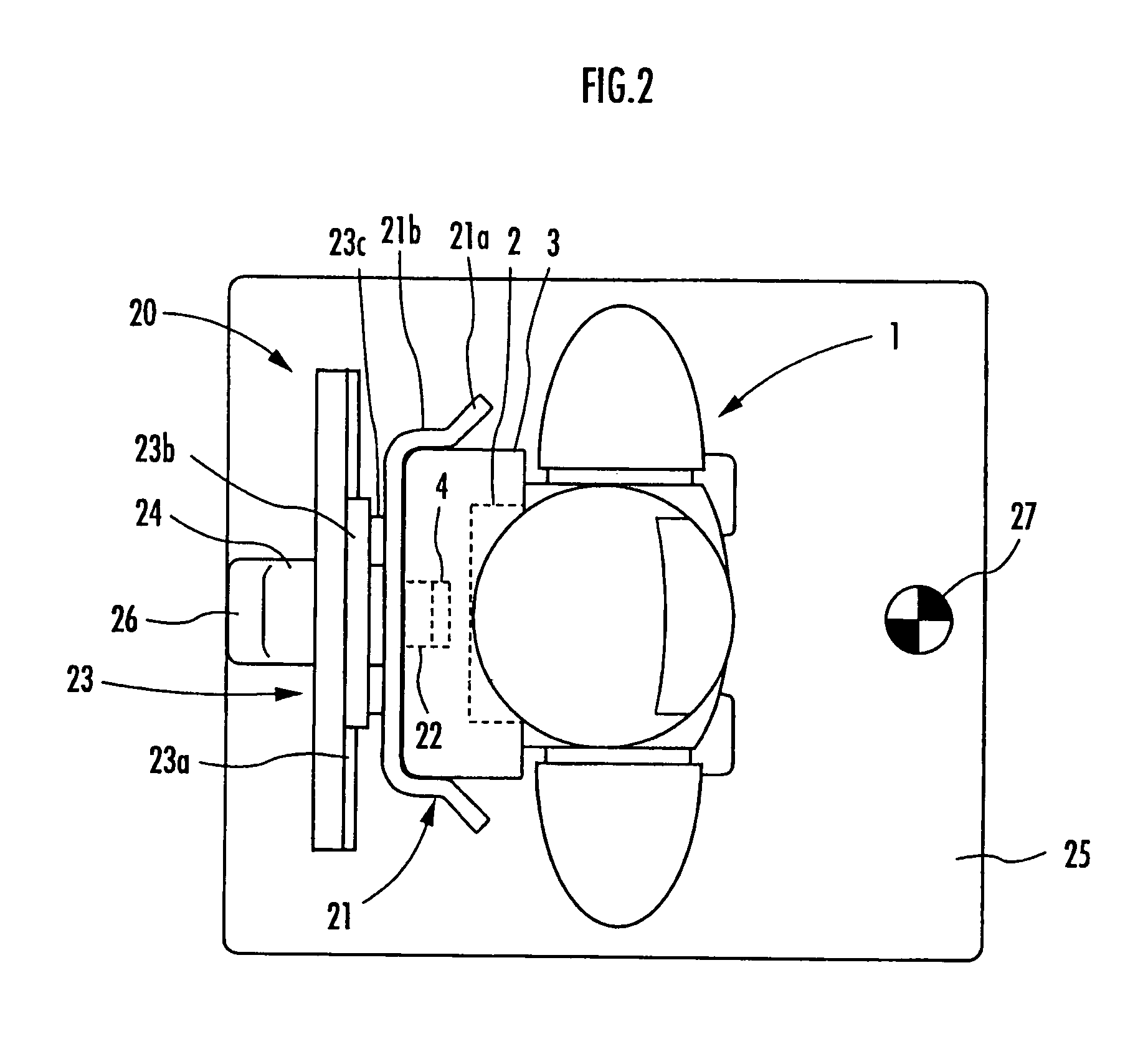Charging system for legged mobile robot
a mobile robot and charging system technology, applied in the direction of remote-control toys, instruments, coupling device connections, etc., can solve the problems of over-charging, power consumption during charging, and displacement of the center of gravity of the robot, so as to facilitate the positioning of the robot and improve the charging system
- Summary
- Abstract
- Description
- Claims
- Application Information
AI Technical Summary
Benefits of technology
Problems solved by technology
Method used
Image
Examples
Embodiment Construction
[0034]Now, a charging system according to an embodiment of the present invention will be described with reference to FIGS. 1 to 9. FIG. 1 is a diagram showing a robot that is being charged on a charging station of the charging system according to this embodiment. FIG. 2 is a plan view of the robot shown in FIG. 1 and some components arranged in the rear cover of the robot. FIG. 3(a) is a cross-sectional view of a power supplying connector and a power receiving connector, and FIG. 3(b) is a cross-sectional view taken along the line b-b in FIG. 3(a). FIG. 4 is a circuit diagram of the charging system according to this embodiment. FIG. 5 is a flowchart illustrating a charging operation of the robot. FIGS. 6(a) to 6(d) are diagrams for illustrating the charging operation of the robot. FIGS. 7(a) and 7(b) are diagrams for illustrating a connecting operation in the case where the robot and the charging station are misaligned with each other. FIGS. 8(a) to 8(d) are diagrams for illustratin...
PUM
 Login to View More
Login to View More Abstract
Description
Claims
Application Information
 Login to View More
Login to View More - R&D
- Intellectual Property
- Life Sciences
- Materials
- Tech Scout
- Unparalleled Data Quality
- Higher Quality Content
- 60% Fewer Hallucinations
Browse by: Latest US Patents, China's latest patents, Technical Efficacy Thesaurus, Application Domain, Technology Topic, Popular Technical Reports.
© 2025 PatSnap. All rights reserved.Legal|Privacy policy|Modern Slavery Act Transparency Statement|Sitemap|About US| Contact US: help@patsnap.com



